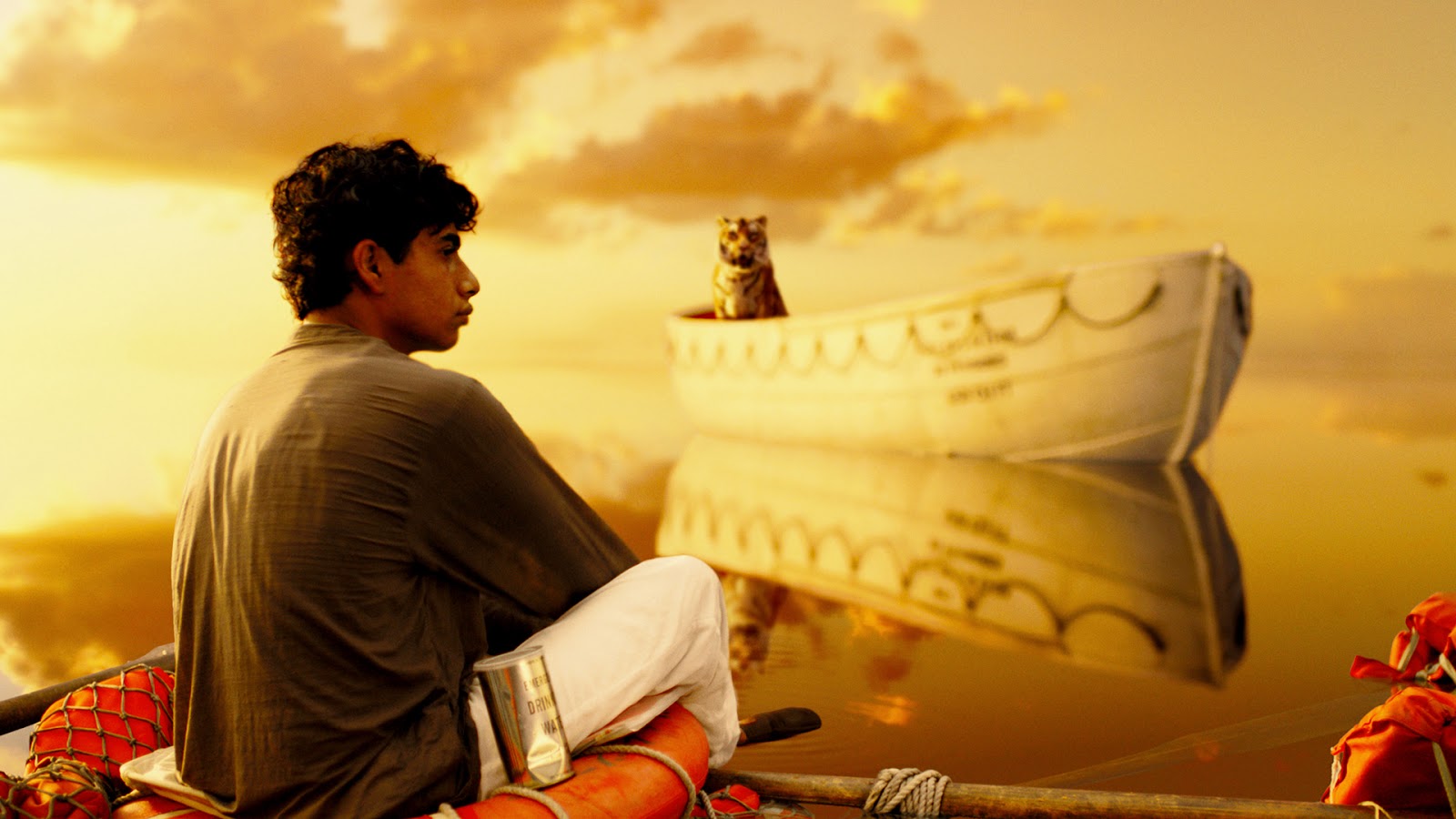Life of Pi
**Plot**
Pi’s family own a zoo that they eventually decide is too expensive to maintain so they set off on a ship, along with all their animals with the aim to sell them in America for funds to start a new life. However, the ship sinks and Pi is left stranded alone aboard a lifeboat with only a few surviving animals for company, namely the mercurial tiger Richard Parker.
**Review**
Since first discovering that Yann Martel’s adventure novel Life of Pi was to get a big screen adaptation I’ll admit to being entirely sceptical about the project and whether it would be possible to truly do justice to such an imaginatively expansive book without simply resorting to CGI overload.
Even upon hearing that Ang Lee, Oscar winning director of Brokeback Mountain was to be at the helm, I still found myself approaching the film with much trepidation, having greatly enjoyed the book but having been greatly disappointed with much of Lee’s most recent fair.
{{ quote Choosing to film using the latest 3D technology, Lee has ensured the fable has a greatly immersive feel to it, without simply relying on the tiresome tricks of objects flying out at the audience.}}
Memories of Lee’s last experiment with CGI still haunt my very soul in fact, so much so that I’ve had to deny the existence of any Hulk film prior to the Edward Norton adaptation in 2008.
Nevertheless, the film debuted to a raft of encouragingly positive reviews from some of my most trusted critics, including my own Granddad, so I decided to put forgive Ang Lee one more time and immerse myself in his newest creation.
I can happily say that Life of Pi marks a triumphant return to form for Ang Lee and rather than simply doing the novel justice, elevates Martel’s book and beloved characters to the level of a grand cinematic spectacle.
Choosing to film using the latest 3D technology, Lee has ensured the fable has a greatly immersive feel to it, without simply relying on the tiresome tricks of objects flying out at the audience.
The story though full of dazzling set pieces and fantastical locations/experiences isn’t difficult to understand and could definitely be marketed as enjoyable family fare. Piscine Molitor (Pi) is the novel’s protagonist and narrator and the film centres around his retelling of his fantastical 227-day journey aboard a lifeboat with a tiger from his family’s zoo named Richard Parker.
We are told the story from the perspective of middle aged Pi and although this serves to remove any true feelings of peril from his story, the way in which Lee constructs the fable, somehow manages to have you fearing for him throughout his plight.
The ‘boy vs nature’ theme is nothing new but the performance of newcomer Ayoush Tandon as the young Pi is one of the film’s most successful aspects. Tandon embodies the bold, curious, naïve and gradually fearless Pi with great aplomb and captures the books description of his endless sense of charming wonder perfectly.
The film’s visual and audio effects are some of the most impressive I’ve ever witnessed, despite the fact that Lee chose to film a majority of the scenes in a giant water tank (ala James Cameron) and the relentless assault of colourful imagery and beautifully designed CGI creatures will have audiences around the world utterly captivated.
The novel’s other protagonist a magnificent tiger named Richard Parker is exquisitely designed and filmed with such care and attention that his character takes on a surprising level of emotional depth considering he cannot utter a word to us or Pi. I along with many new fans of the film left the cinema wanting to adopt a Tiger, yet the film is careful not to overly anthropomorphize Richard Parker, taking care to emphasize the carnivorous indifference of the mercurial beast.
The only troubling aspect of the film and novel is the way in which it could be seen as a form of religious propaganda, not for any one religion in particular( as audiences will find amusingly obvious once they’ve seen the film) but for religion as a whole.
Both the novel and the film make it perfectly clear that it is Pi’s challenging relationship with God (or the many he believes in) that enables him to survive his ordeal and conquer his fears. For some the handling of such a delicate topic may appear to heavy handed at parts, but it hardly detracts from the film’s main purpose as a source of outstanding spectacle and tale of human perseverance.

Comments